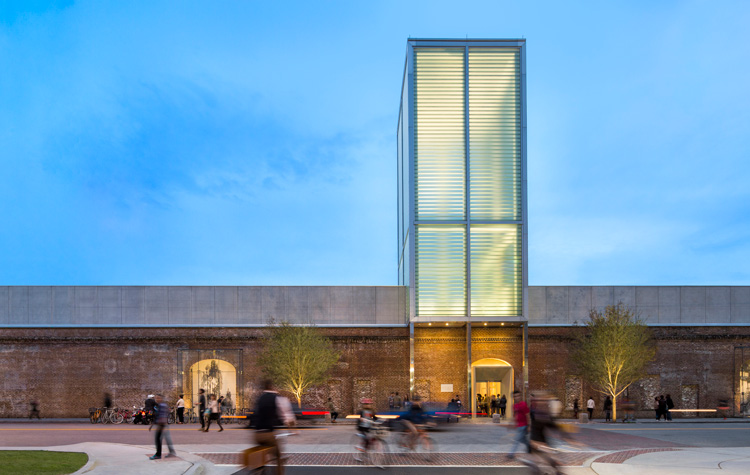The Savannah College of Art and Design is the only art and design university
in the U.S. that offers an equestrian program.
Nestled on the Savannah River at the South Carolina border is Savannah, Georgia’s oldest city. Beneath the canopy of live oaks and Spanish moss, the pedestrian-friendly town is rich with history and charm. Eclectic architecture, horse-drawn carriages on cobblestone streets, bustling shops, and grassy park squares pepper the coastal city. The environment provides a picturesque backdrop to inspire students who attend Savannah College of Art and Design (SCAD). Founded in 1978, SCAD is the only art and design university in the U.S. that offers an equestrian program. The two areas of study blend and benefit each other.

“The art and design focus at SCAD is a perfect complement to equestrian studies because classic horsemanship is an art,” said Kelly Theisen, associate chair of equestrian studies. “The horse is the canvas. The horse is our design; it is living, breathing art.”
Theisen said that guiding horses through a course of jumps or the movements of a dressage test is comparable to the work of students pursuing performing arts. Just as dancers practice daily to perfect their form and craft, so must riders train and push themselves to become better equestrians.
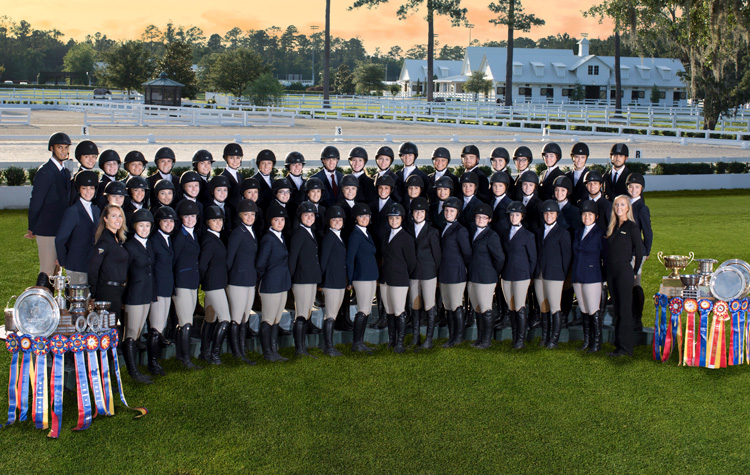
SCAD is also home to a championship-winning equestrian team led by coach Ashley Henry. The team competes in the Intercollegiate Horse Show Association (IHSA) and has won the IHSA national championships for three consecutive years. They train at SCAD’s state-of-the-art, 100-acre Ronald C. Waranch Equestrian Center.
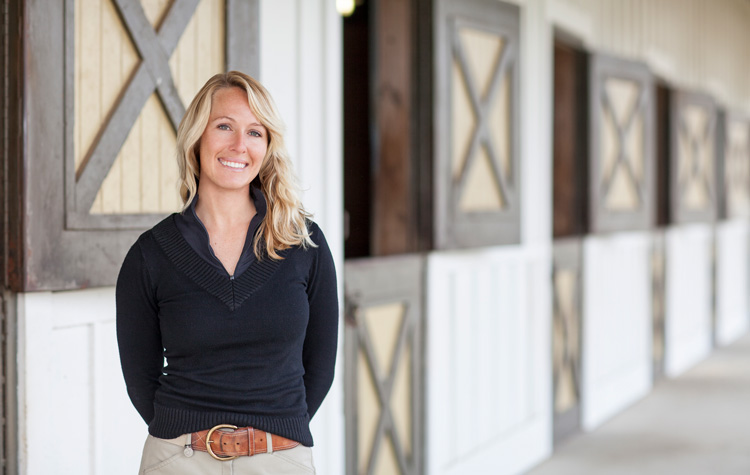
Henry said about her outlook for the year, “It takes more than talent to win an IHSA national championship. SCAD’s equestrian team has the drive and the commitment to win a fourth consecutive title. We’re not complacent at the top, and all of our artist-athletes have big hopes and dreams for this season.”
Just as the SCAD equestrian team has big hopes and plans, so do the equestrian-studies students. The program offers classes in equestrian facility and show-jumping course design. Much like the SCAD architecture or interior design classes, the equestrian facility design class teaches students to consider everything from efficient layout to materials, location, soil, footing and more.
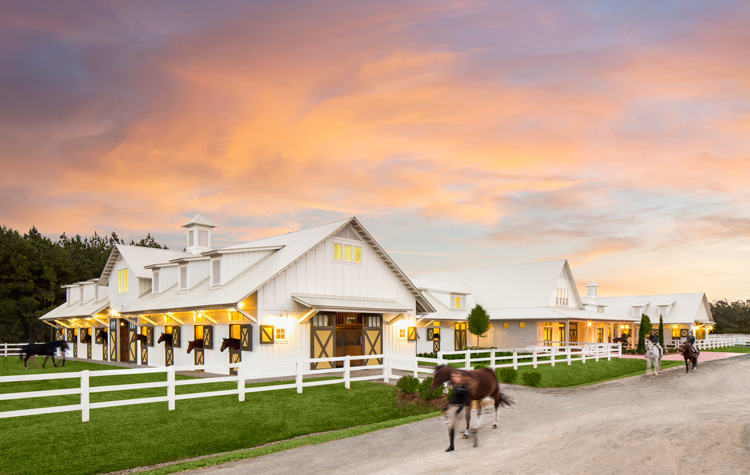
SCAD’s Collaborative Learning Center (CLC) offers opportunities for students from various majors to work on specific projects with real business applications. In 2016, Theisen supervised a CLC team of students on a product-development project for high-end equestrian retailer Equis Boutique. César Hirsch, Equis Boutique chief operating officer, was referred to SCAD by his friend Eric Straus, a 13.5 pt professor emeritus and fellow FEI steward.
Theisen put together a diverse team to work on the top-secret Equis Boutique design project. Included on the project team were students from equestrian studies, graphic design, fashion design, industrial design and accessories design.
“We had people from China, Venezuela, and different parts of the world both undergrads and graduate students,” Hirsch said. “They worked together as a team, and it was so beautiful. They were very involved in the project. I went there every month, and we communicated weekly.”
The SCAD team designed a product, which, after slight tweaking, is now in the manufacturing stage. “The Equis Boutique project allowed students to gain real-life business experience with an actual company,” Theisen said.
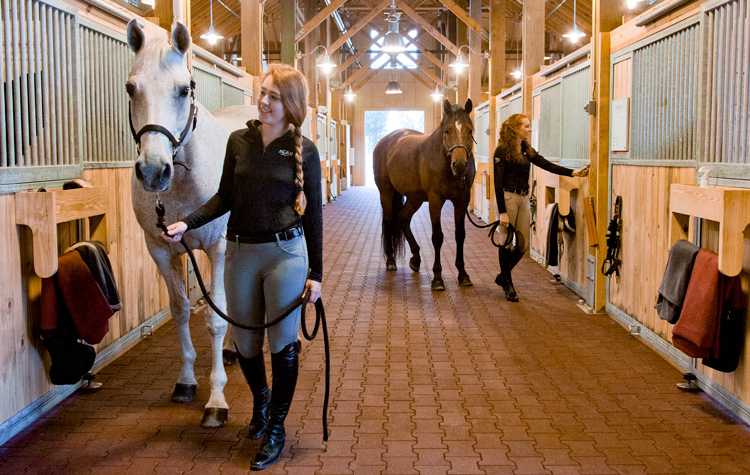
SCAD students often combine their horse-loving roots with course projects. M.G. Taylor, a fourth-year student who has been an equestrian competitor in the U.S. and Europe, majors in industrial design, minors in equestrian studies, and plans to go on to graduate school for biomedical engineering with the hope of designing prosthetics for athletes. Taylor said that the SCAD equestrian program is beneficial for both her projects in design and her outlook on life.
As a project for her industrial design course, Taylor strove to design English riding stirrups that were an improvement on the typical heavy, bulky design and to create them in a polycarbonate material. She also wanted to add the benefit of foot placement at a 45-degree angle to increase heel depth and to position the toe slightly outward to improve equitation. Access to SCAD’s Waranch Equestrian Center helped her develop her project.
“I got to see how it worked on the horses,” Taylor said. “I took my foam prototypes to test how they would hang from the saddle.”
She attributed her commitment to her design projects to basic tenets she learned as an equestrian. Working with horses helped her consider what factors need to go into designing products that best fulfill the consumer’s needs. At SCAD, the sensibilities of the equestrian pair perfectly with the creative.
“There’s a lot to be said for spending time with animals when school is stressful,” Taylor said. “To be out there in nature with the horses—that does so much for the soul.”
For SCAD graduate and former equestrian team member Julie Ferris, horses are inspiration.
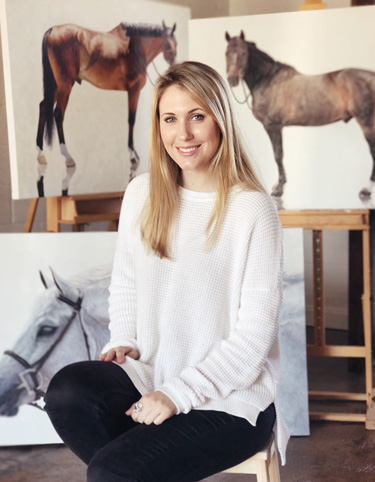 Horses have been a lifelong inspiration for Julie Ferris, but it wasn’t until she went to the Savannah College of Art and Design that she finally was able to bring her equestrian life and her artistic ambitions together. That fusion is now sustaining Ferris both personally and in her career as a visual artist.
Horses have been a lifelong inspiration for Julie Ferris, but it wasn’t until she went to the Savannah College of Art and Design that she finally was able to bring her equestrian life and her artistic ambitions together. That fusion is now sustaining Ferris both personally and in her career as a visual artist.
Ferris, who started riding at about age 5, brings a lot of cumulative horse-related knowledge to her canvas. But her competition experience began at SCAD, where she joined the university’s national championship-winning equestrian team and once won an award herself for having the best combined grade point average and horse show points.
Ferris places her subjects against a textured white background, putting the focus squarely on the horse. In her full-body portraits, the hooves and lower legs are also lightly reflected, almost as if the horses are standing on a mirror.
“The white background puts them in the pure, pristine space that isn’t realistic but allows the viewer to see the horses as they are,” she said. The reflections, Ferris adds, are a symbolic reminder to reflect on the animals, the mystery of their thoughts and personalities, and on life in general.
“I see a lot of parallels between my art and my riding life,” Ferris said. “The horse is my muse, my focus, my passion. I have gratitude for them and what they’ve done for us. I want to portray them in the light that they deserve, and I hope that even people who have never had contact with a horse will somehow know them through my paintings.”

